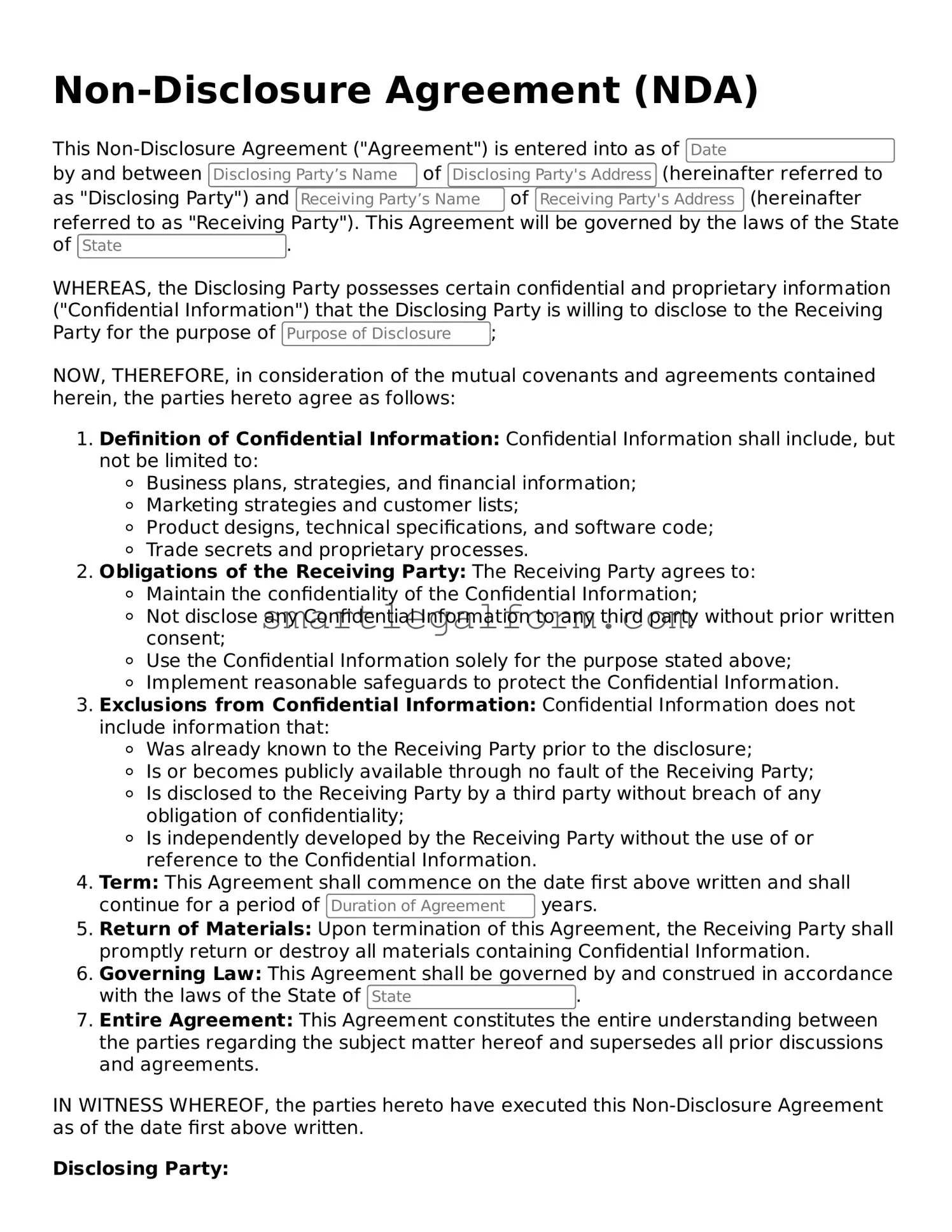Filling out a Non-disclosure Agreement (NDA) can be a straightforward process, but many individuals make mistakes that can lead to complications down the road. One common error is failing to clearly define the information that is considered confidential. Without a specific description, it becomes challenging to enforce the agreement and protect sensitive information.
Another mistake is neglecting to include the duration of the confidentiality obligation. It is essential to specify how long the NDA will remain in effect. If this timeframe is omitted, parties may find themselves in disputes about whether the obligation still applies after a certain period.
Many people also overlook the importance of including all relevant parties in the NDA. If a key individual or entity is not mentioned, they may not be bound by the agreement, which can undermine its effectiveness. Always ensure that everyone involved in handling the confidential information is listed.
Additionally, some individuals fail to consider the governing law of the agreement. This can lead to confusion about which state’s laws apply if a dispute arises. Specifying the governing law helps to clarify how the NDA will be interpreted and enforced.
Another frequent oversight is not addressing the consequences of a breach. An NDA should outline what happens if one party fails to uphold their end of the agreement. This can include legal remedies, financial penalties, or other actions that can be taken in response to a violation.
People often make the mistake of using vague language in the NDA. Clear and precise wording is crucial to ensure that all parties understand their obligations. Ambiguities can lead to misinterpretations and may weaken the enforceability of the agreement.
Some individuals also forget to include a clause for dispute resolution. Outlining how disputes will be handled—whether through mediation, arbitration, or litigation—can save time and resources if conflicts arise later.
Moreover, failing to review the NDA with legal counsel is a common error. Even if the form seems straightforward, having a legal professional review the document can help identify potential issues and ensure that the agreement meets all necessary legal standards.
People sometimes neglect to keep a signed copy of the NDA for their records. This can lead to confusion or disputes about the terms of the agreement. Always ensure that all parties retain a copy for future reference.
Lastly, some individuals rush through the signing process without fully understanding the implications of the NDA. It is crucial to take the time to read and comprehend the terms before signing. Rushing can lead to unintended commitments that could have been avoided with a little more diligence.
